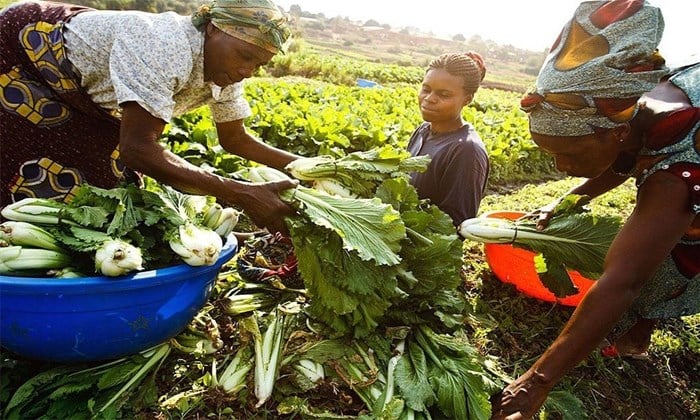
Subscribe & Follow
#AfricaMonth
Jobs
- Cashbook Accountant Cape Town
- Nursery Production Manager George
In the news
Africa farmers need finance that is focused on the entire value chain

Access to finance is needed to unlock Africa's agricultural potential but it cannot be focused on just one aspect of the value chain at the expense of others. Van der Westhuizen says this is partly why the traditional reliance on grant funding from government sources or NGOs has not succeeded in creating real agricultural productivity gains on the continent. It has simply been too limited in scope.
Relying on commercial banks to solve the problem also has its limitations as their regulatory and fiduciary duties require them to adopt a risk mitigation strategy, which by its very nature limits the potential scope of clients to larger organisations with established track records. While this makes sound commercial sense it doesn’t necessarily achieve broader policy objectives of developing agriculture for food security, job creation and community welfare reasons.
"For a bank the risk profile of a commercial farmer is vastly different to that of a smallholder farmer. It makes more sense for them to lend to the end-customer of a group of smallholder farmers than each individual smallholder. If you’ve got a community of smallholder farmers growing barley for a brewery then it makes more sense for the bank to lend to the brewery who can then on-lend to the smallholders."
Van der Westhuizen says there are about 32,000 commercial farmers in South Africa of which it is estimated that between 5,000 and 7,000 are responsible for producing roughly 80% of the country’s agricultural output. By contrast, on the rest of the continent smallholder farmers account for between 70% and 80% of agricultural output, which is often insufficient to meet their country’s nutrition requirements – this results in countries having to import food from abroad, often from heavily subsidised markets like the European Union, which makes it difficult for domestic farmers to compete on price.
This too results in a situation in Africa, which is home to roughly 60% of the world’s available arable land but is still regarded as a food insecure continent, and is partly due to a lack of access to mechanised solutions such as irrigation equipment meaning as much as 90% of the smallholder farmers on the continent still rely on rain to water their crops.
Integrating technologies
Improved farming techniques, access to better seeds and other mechanised equipment could further boost agricultural yields.
Van der Westhuizen says the integration of digital technology into agriculture represents a major opportunity for Africa. The emergence of the mobile phone as a popular communication tool, coupled with Internet-based solutions, could significantly boost access to financing for agricultural inputs across the value chain.
Van der Westhuizen adds that electronic payment and receipt records of these accounts can be leveraged to harvest valuable client information which can then be used to create more accurate risk profiles of smallholder farmers by analysing their cash flow management, repayment histories and spending habits.
"The more accurate a picture you can build of the borrower the better you can price their risk, which boosts the likelihood of credit providers actually wanting to lend money to them. You could even use their expenditure on inputs like fertiliser to estimate their approximate yields based on the size and quality of the land on which that fertiliser was used, and for which crops."
Guarantee schemes such as those provided by USAID can further incentivise commercial lenders to provide financing to smallholder farmers. A project between USAID and Ghana’s Feed the Future programme, helped improve the livelihoods of 113,000 smallholder farmers by boosting the productivity of rice, maize, and soy cultivation thanks to the provision of such guarantees.
Boosting agricultural output
Van der Westhuizen adds that the enormous potential to boost Africa’s agricultural output is underscored by the fact that most smallholder farmers on the continent only have the capacity to farm around 10% of the land available to them at any one time due to a reliance on hand hoeing and rainfall. “You have to look at the entire supply chain financing arrangement from the seed and fertiliser right up to the tractor. You need to sell an ecosystem, not just a machine, if you want to succeed in making the farmer a businessman.”
"By thinking laterally and by utilising better information through the power of technology we can build financing models that price risk more competitively, resulting in better repayment terms for the borrower," says van der Westhuizen.
"As we improve our risk pricing models and adapt them for the unique circumstances of Africa, we can also improve the likelihood that lenders actually want to lend, which in turn then makes it possible to boost access to financing for inputs across the entire agricultural value chain."








